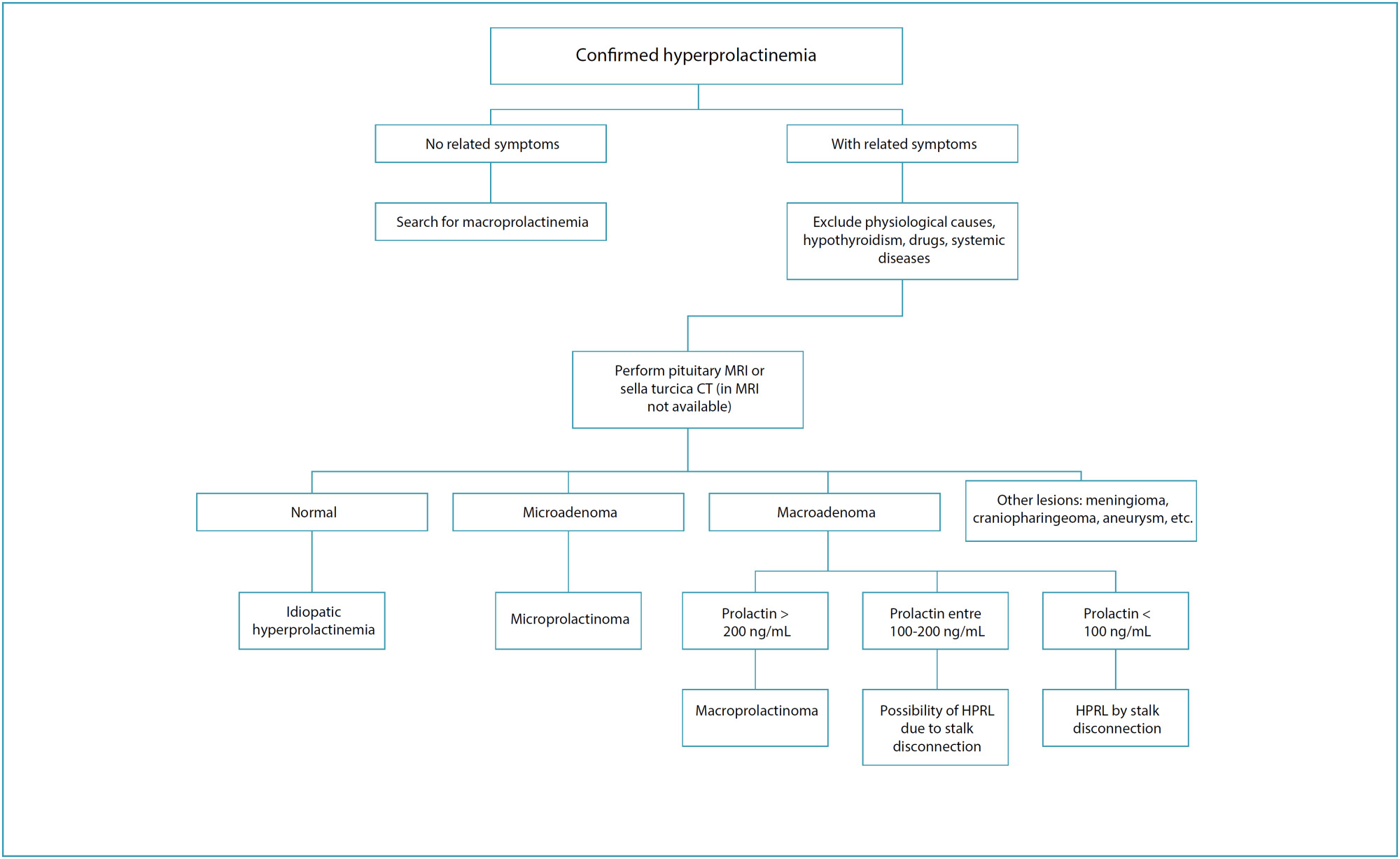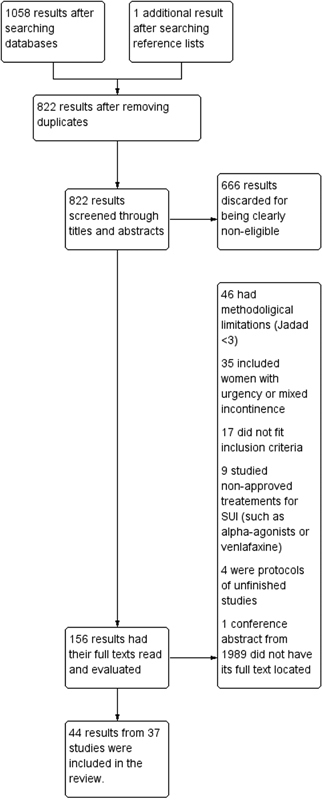-
10-17-2000
2001 Uma Odisséia no Universo Científico Feminino
Revista Brasileira de Ginecologia e Obstetrícia. 2000;22(4):190-190
Abstract
2001 Uma Odisséia no Universo Científico Feminino
Revista Brasileira de Ginecologia e Obstetrícia. 2000;22(4):190-190
-
Original Article10-17-2000
Methods of treatment of genuine stress incontinence: a comparative study between a pelvic floor exercise program and a pelvic floor electrical stimulation
Revista Brasileira de Ginecologia e Obstetrícia. 2000;22(1):49-54
Abstract
Original ArticleMethods of treatment of genuine stress incontinence: a comparative study between a pelvic floor exercise program and a pelvic floor electrical stimulation
Revista Brasileira de Ginecologia e Obstetrícia. 2000;22(1):49-54
DOI 10.1590/S0100-72032000000100009
Views118Purpose: to compare patients with genuine stress incontinence (GSI) who were submitted to a pelvic floor exercise program (PFEP) with those who were submitted to a pelvic floor electrical stimulation (PFES). Methods: fourteen GSI patients, with age between 31-64 years, participated in the study. They were divided into two groups of 7 each. PFEP or PFES was performed for 10 days. The women were evaluated at the first consultation and reevaluated after the ten-day treatment by only one physical therapist. For the statistical analysis nonparametric tests were used. Results: all had a partial or a total improvement of the GSI after the treatment, considering the subjective and objective analysis of the research. Conclusion: both PFEP and PFES showed to be effective to treat GSI, although PFEP showed a tendency to be the better treatment.
Key-words Genuine stress incontinencePelvic floor electrical stimulation programPelvic floor exercise programSee morePlumX Metrics
- Citations
- Citation Indexes: 8
- Usage
- Full Text Views: 113318
- Abstract Views: 1974
- Captures
- Readers: 66
-
Original Article10-17-2000
Comparison of the results of the treatment of stress urinary incontinence with three different surgical procedures
Revista Brasileira de Ginecologia e Obstetrícia. 2000;22(1):43-48
Abstract
Original ArticleComparison of the results of the treatment of stress urinary incontinence with three different surgical procedures
Revista Brasileira de Ginecologia e Obstetrícia. 2000;22(1):43-48
DOI 10.1590/S0100-72032000000100008
Views118See morePurpose: to analyze the prevalence of genuine urinary incontinence (GUI) recurrence, after at least two years of follow-up, in different surgical techniques used for its correction. Patients and Methods: fifty-five patients with diagnosis of GUI, submitted to surgery for its repair at the Serviço de Ginecologia e Obstetrícia do Hospital de Clínicas de Porto Alegre from 1992 to 1996 and whose post-surgical follow-up was superior to 2 years were divided into three groups according to the surgical approach: Kelly-Kennedy (n = 24), Burch (n = 23) and Marshall-Marchetti-Krantz (n = 8). Results: there were no differences regarding recurrence rate, age at surgery and at recurrence time, estrogen therapy, number of pregnancies and vaginal delivery (p>0.05). Although posterior perineoplasty was more prevalent in the Kelly-Kennedy group, it did not influence the recurrence rate. The group submitted to the Burch approach had more years of menopause at the time of surgery. Conclusion: the recurrence rates of urinary incontinence comparing the three different techniques (Kelly-Kennedy, Burch and Marshall-Marchetti-Krantz) were, respectively, 29.2, 39.1 and 50%, which did not differ statistically. Considering the potential confusional bias for urinary stress incontinence, they did not differ among the groups. Nevertheless, we noticed that all women who had previous surgery presented recurrence of incontinence.
-
Original Article10-17-2000
Underreporting of maternal mortality in Campinas from 1992 to 1994
Revista Brasileira de Ginecologia e Obstetrícia. 2000;22(1):27-32
Abstract
Original ArticleUnderreporting of maternal mortality in Campinas from 1992 to 1994
Revista Brasileira de Ginecologia e Obstetrícia. 2000;22(1):27-32
DOI 10.1590/S0100-72032000000100005
Views137See morePurpose: to identify and quantify the underreporting of maternal mortality, from death certificates (DC) in Campinas, São Paulo, from 1992 to 1994. Methods: a total of 216 DC whose causes of death were maternal (declared and/or presumed) were selected among the 1032 DC of 10 to 49-year-old women. A complementary investigation was performed on hospital records, at the death verifying units, and in households. Results: eight additional maternal deaths were identified among the 204 DC with presumed maternal death. This corresponded to an underreporting rate of 40% or to a correction factor of 1.67 for the official MMR. The first cause of underreporting was abortion (71.5% or 05/07) and indirect maternal deaths represented the second cause (66.6% or 02/03). Conclusions: the death certificate cannot be considered the only source to identify maternal death. Complementary investigation of the presumable causes of maternal death should be performed. Legislation, social and religious factors might influence the underreporting of abortion as the cause of maternal death.
PlumX Metrics
- Citations
- Citation Indexes: 4
- Usage
- Full Text Views: 4854
- Abstract Views: 552
- Captures
- Readers: 7
-
Original Article10-17-2000
Gestational and delivery complications as perinatal risk factors
Revista Brasileira de Ginecologia e Obstetrícia. 2000;22(1):19-26
Abstract
Original ArticleGestational and delivery complications as perinatal risk factors
Revista Brasileira de Ginecologia e Obstetrícia. 2000;22(1):19-26
DOI 10.1590/S0100-72032000000100004
Views84See morePurpose: to evaluate gestational and delivery complications as risk factors for perinatal death. Methodology – Patients: the cases (perinatal deaths) were identified among a total of 3,031 deliveries from the maternity of the Rio de Janeiro State Military Police. Methods: the study design was a nested case-control one. Cases (n = 82) were perinatal deaths with a minimum gestational age of 28 weeks or a weight of 1,000 g. Controls (n = 246) were live babies for the first week of life. The analysis was made in three steps: univariate, stratified and multivariate (logistic regression). Results: the gestational complications showed an odds ratio of 4.21 and the delivery complications, 5.26. The newborn weight showed an OR = 0.999 per gram over 1,000 g weight. The gestational age showed an OR = 0.729 per week of gestation over 28 weeks. Conclusions: the gestational complications and the delivery complications were important risk factors for perinatal death. The gestational age and the weight of the newborn were important protective factors.
PlumX Metrics
- Citations
- Citation Indexes: 2
- Usage
- Full Text Views: 22088
- Abstract Views: 1841
- Captures
- Readers: 9
-
10-13-2000
Avaliação da Mobilidade do Colo Vesical com Ultra-Sonografia Via Vaginal em Mulheres com Perda de Urina aos Esforços
Revista Brasileira de Ginecologia e Obstetrícia. 2000;22(6):387-387
Abstract
Avaliação da Mobilidade do Colo Vesical com Ultra-Sonografia Via Vaginal em Mulheres com Perda de Urina aos Esforços
Revista Brasileira de Ginecologia e Obstetrícia. 2000;22(6):387-387
DOI 10.1590/S0100-72032000000600014
Views40Avaliação da Mobilidade do Colo Vesical com Ultra-Sonografia Via Vaginal em Mulheres com Perda de Urina aos Esforços […]See more -
10-13-2000
Estudo da associação entre parâmetros anatomopatológicos de prognóstico e a dopplerfluxometria no câncer de mama
Revista Brasileira de Ginecologia e Obstetrícia. 2000;22(6):387-388
Abstract
Estudo da associação entre parâmetros anatomopatológicos de prognóstico e a dopplerfluxometria no câncer de mama
Revista Brasileira de Ginecologia e Obstetrícia. 2000;22(6):387-388
DOI 10.1590/S0100-72032000000600015
Views51Estudo da associação entre parâmetros anatomopatológicos de prognóstico e a dopplerfluxometria no câncer de mama […]See more -
10-13-2000
Análise crítica comparativa dos achados ultra-sonográficos, vídeo histeroscópicos e histológicos no diagnóstico das patologias endometriais
Revista Brasileira de Ginecologia e Obstetrícia. 2000;22(6):386-386
Abstract
Análise crítica comparativa dos achados ultra-sonográficos, vídeo histeroscópicos e histológicos no diagnóstico das patologias endometriais
Revista Brasileira de Ginecologia e Obstetrícia. 2000;22(6):386-386
DOI 10.1590/S0100-72032000000600012
Views37Análise crítica comparativa dos achados ultra-sonográficos, vídeo histeroscópicos e histológicos no diagnóstico das patologias endometriais […]See more
Search
Search in:
Tag Cloud
Pregnancy (252)Breast neoplasms (104)Pregnancy complications (104)Risk factors (103)Menopause (88)Ultrasonography (83)Cesarean section (78)Prenatal care (71)Endometriosis (70)Obesity (61)Infertility (57)Quality of life (55)prenatal diagnosis (51)Women's health (48)Postpartum period (46)Maternal mortality (45)Pregnant women (45)Breast (44)Prevalence (43)Uterine cervical neoplasms (43)








